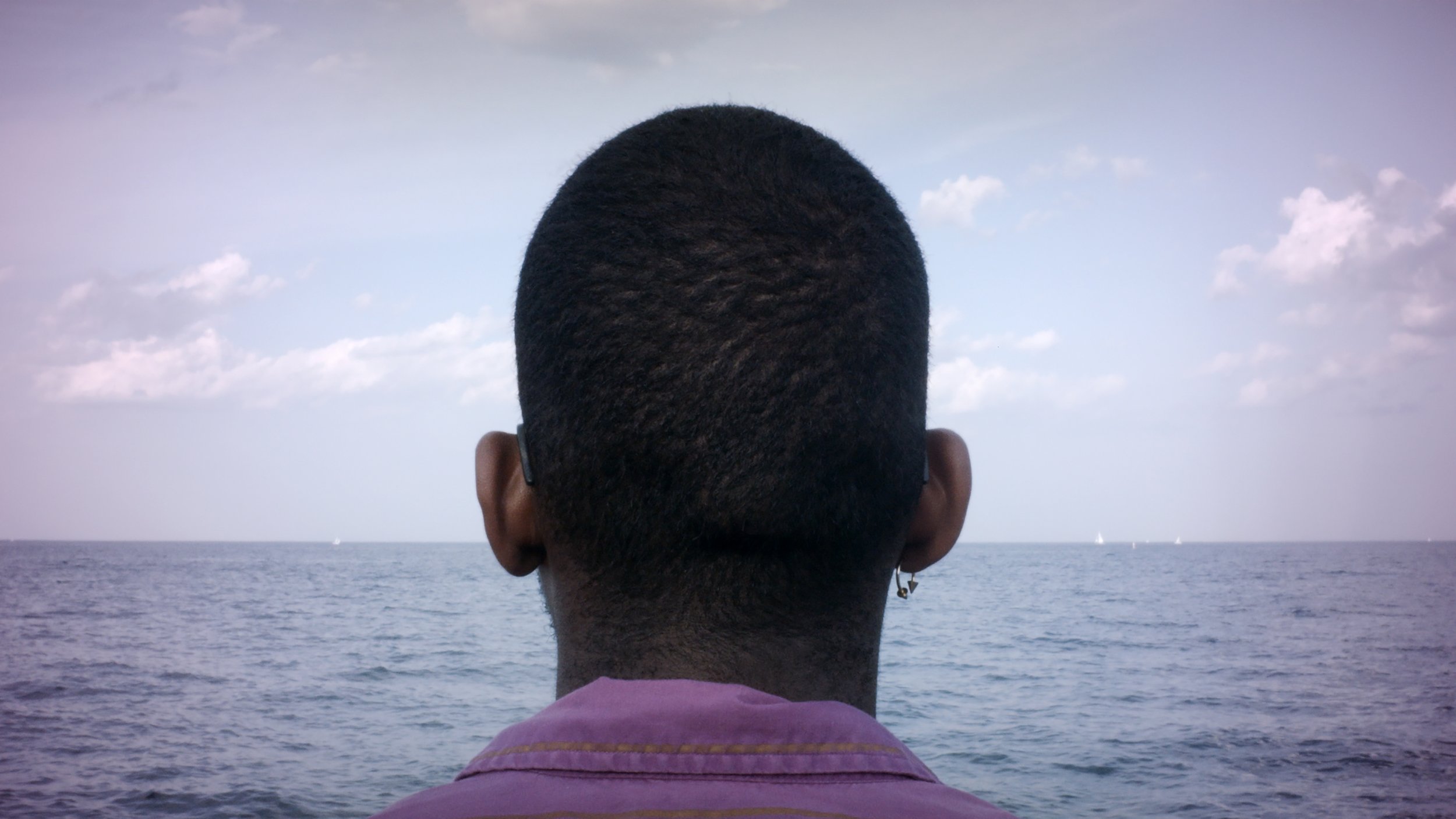Friday, September 29 (7:30PM)
GREEN BRIDGES, TRANSIENT WALLS
Co-presented by Aurora Picture Show and Houston Climate Justice Museum
Location: Outdoor lot at the corner of Commerce St. and Roberts St. in Second Ward/East End
(Near 3210 Commerce St., Houston, Texas 77003)
Free Admission
Aurora and the Houston Climate Justice Museum present Green Bridges, Transient Walls, a program exploring our connections with nature as we move through borders, neighborhoods, and worlds both secular and spiritual, real and virtual. Curated by Salome Kokoladze, this selection of contemporary films and videos was inspired by questioning the infrastructures we put in place to promote or prevent movement. “Green bridges” are typically covered with native vegetation to guide animals safely across highways. “Transient walls” refers to the recent surge in border wall constructions around the world and the arbitrariness of geographic demarcations. The program leans into the absurd to investigate links between freedom of movement, inter-species relationships, and environmental and political crises. Attendees are encouraged to bring their own blankets and lawn chairs for this free, outdoor screening. Following the program, join us for a reception at the nearby Houston Climate Justice Museum (3308 Garrow Street), where the installation The Sunset Road (2023) by Houston-based Cuban conceptual artist Reynier Leyva Novo will be on view.
NOTE: In the case of inclement weather, this screening will take place the following day, Saturday, Sept. 30 (7:30pm)
Program:
Shiva Ahmadi, Marooned (2021, 5:00)
Saúl Hernández-Vargas, First Motherly Stone (2021, 3:52)
Lili Chin, This is not the gulf (2023, 8:18)
Heather Frise and Mike Hoolboom, The Central Gesture (2023, 1:43)
Frédéric Moffet, The Magic Hedge (2016, 9:00)
Sindhu Thirumalaisamy, untitled (concrete story III) (2022, 1:00)
Art Jones, Dronography (2016, 5:45)
Caitlin Craggs,Tomato (2016, 2:42)
Zelikha Zohra Shoja, Haal (2023, 3:34)
Theo J. Cuthand, Medicine and Magic (2020, 9:33)
Saúl Hernández-Vargas, Third Lunar Limb (2020-23, 8:49)
Oksana Kazmina, Digging (2022, 5:00)
Baba Hillman, Jacumba Song (2013, 2:26)
Miguel Angel Ríos, Landlocked (2014, 4:54)
Curator’s Notes:
Cycles
Cyclicality—of seasons, labor, and our daily habits—is time and time again disturbed by unexpected events caused by climate or political crises. In Lili Chin’s This is not the gulf, 2023, we see the gulf water repeatedly. The water movements are at times disrupted by an image of a dead bird, other times, by flowers or a tree. We do not see the same water twice, but the Live Oak tree that has been standing strong through multiple hurricanes and even the civil war gives us a lesson on survival. In some cases, repetitive movements are a part of extractive processes. In Shiva Ahmadi’s Marooned, 2021, genderless beings dig stones from the ground, and carry them to an oil tanker stationed in water. The body of water here feels like a source of hope, but it also supports and provides passageway to the oil tanker, not to the bodies in need of escape.
Horizontal vs. Vertical
Bridges are horizontal structures, while walls are vertical. It is not accidental that modern dance veered toward close-to-the-floor horizontal movements, departing from the vertical choreography characteristic to ballet. This shift in movement vocabulary in the early 20th century was also reflected in the desire to depart from hierarchical top-down approaches to navigating the world, marking a collective attempt toward the horizontal distribution of power. Miguel Angel Ríos and Baba Hillman study horizontal movements. In Landlocked, 2014, dogs dig holes through the earth at the foot of the Andes’ mountains to get to the sea, teaching us of defiance and hope. In Jacumba Song, 2013, while the camera moves across Anza Borega desert, we discover possibilities of connection between humans and animals, between myth and reality. Oksana Kazmina and Saúl Hernández explore vertical movements. In Digging, 2022, Kazmina, digs into the US soil to grasp the absurdity of war. Saúl Hernández-Vargas points his camera to the sky to understand its complicity in the construction of borders below it.
Close up
Studying movement—whether by looking at migration, transfer of resources globally, or gentrification—often happens on a macro level. The question of subtlety in understanding diverse movements and their political implications is also important. Art Jones shows us Bronx from the perspective of a bee. Caitlin Craggs focuses in on a tomato to discuss imperialism and consumerism. Sindhu Thirumalaisamy, through her non-linear camera movements, listens to “the collective voice of mollusks” to uncover layered histories of a US coastline. Frédéric Moffet, Heather Frise and Mike Hoolboom, are interested in subtle, secretive acts of defiance within a city. And despite it being challenging, Zelikha Zohra Shoja and Theo J. Cuthand, explore spiritual paths passed down to them through a cultural or familial legacy. This process feels like a slow and quiet revolution.
Aurora Picture Show is funded in part by the City of Houston through Houston Arts Alliance.
Image: © Frédéric Moffet, The Magic Hedge, 2016. Courtesy of Video Data Bank.

